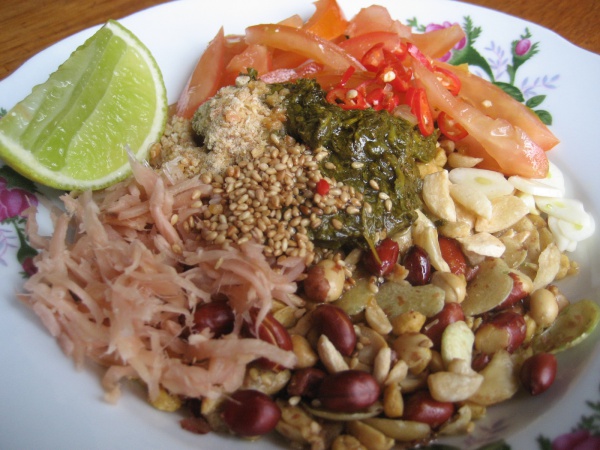Facts About Lahpet
Lahpet, also known by various spellings such as laphat, laphet, lephet, leppet, or letpet, is a prominent delicacy in Burmese cuisine. Unlike in many other cultures where tea is primarily a beverage, in Myanmar, tea is also consumed as a food, particularly in its fermented or pickled form. This distinctive treat, Lahpet, is deeply ingrained in Burmese culture and is regarded as a national delicacy.
Tea cultivation in Myanmar is predominantly concentrated in the northern Shan State, where extensive tea farms produce the leaves that will eventually become Lahpet. The preparation of Lahpet can take several forms, including Lahpet chauk (dried tea leaves), Acho gyauk (black tea), and Lahpet so (wet tea).
Historically, Lahpet has served a greater role than merely a food item. It has been used as a peace offering between warring kingdoms, symbolizing reconciliation and goodwill. Even today, serving Lahpet to guests is a traditional gesture of hospitality in Burmese homes.
The fermentation process for Lahpet involves three meticulous steps, resulting in pickled tea leaves that are often seasoned with garlic, chili, salt, lemon juice, and peanut oil. The most popular way to enjoy Lahpet is as a tea leaf salad, a staple at various ceremonies and special occasions, including weddings and nat (spirit) worship rituals.
There are regional variations of Lahpet, such as Mandalay Lahpet and Yangon Lahpet, each offering its own unique blend of ingredients and flavors. Several brands dominate the market, with Ayee Taung Lahpet and Shwe Toak being among the favorites. However, the industry faced a setback in 2009 when some Lahpet brands were found to contain a dye not approved for food use, leading to bans in countries like Singapore and Malaysia.
Despite this challenge, Lahpet continues to be a cherished part of Burmese cuisine and culture. It stands as a symbol of tradition, hospitality, and national pride, making it much more than just a culinary delight in Myanmar.

 India
India